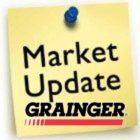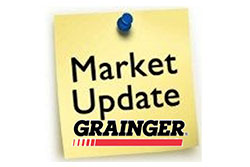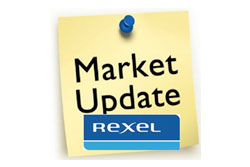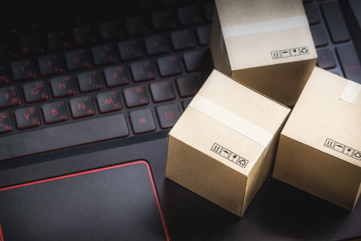Grainger and Rexel Share Q3 Results

Recently both Grainger and Rexel shared their Q3 performance. While both experienced growth in Q3 Grainger’s diversification and ability to benefit from the pandemic, as well as its multi-faceted eCommerce offering, continued power performance. The following are insights from their quarterly reports.

Grainger
- Organic sales up 4.6% driven by pandemic product sales BUT saw improved sales of non-pandemic products.
- US sales up 3.1% for Q3. Pandemic products up 53%, non-pandemic products down 8%.
- Estimate US MRO market down 5-6% for Q3
- Non-pandemic sales down 7% YTD
- US sales up 3.1% for Q3. Pandemic products up 53%, non-pandemic products down 8%.
- Improving trends with manufacturing and commercial customers
- EDI Pro and KeepStock connected digital solutions make up over 30% of Grainger’s direct revenue.
- Continuing to invest in Grainger.com with an emphasis on search and “visualization capabilities and enriched product descriptions and content.” (further evidence that quality product content is critical to customer engagement and revenue generation on your website. Grainger benefits by getting content directly from manufacturers as well as the ability to invest in developing their own and optimizing search functionality.)
- Marketing is credited as a large contributor to US share gain over the past few years via improved effectiveness in media advertising (this is where size and reach counts) and paid search. More investment will occur in this area.
- Zoro, Grainger’s marketplace, now has about 5 million SKUs, after having added 1.5 million so far this year (and we know some electrical manufacturers who were not Grainger suppliers who are now contributing content to Zoro, viewing it as a new channel to market for them.)
- Endless assortment model, which is Zoro and MonatoRO, grew 20% … both are marketplaces. Zoro, based upon comments by Grainger about breaking out results in three more years, is a less than 10% of sales … (probably 4-5%, which would make it a $400-500M business). Expect this model to be a high single digit operating margin business “in a few years.” (Based upon comments in the Q&A with analysts, there was discussion about a heavy investment in technology and people to get Zoro started. This highlights the level of commitment needed to eCommerce efforts … high people, technology, and marketing investments for multiple years prior to gaining a ROI. It requires vision and commitment.)
- Pandemic is generating new customers who are coming to Grainger for pandemic related products (safety, PPE, flexiglass barriers, etc) and Grainger is now using data analytics and remarketing to these customers to generate repeat orders … of pandemic and non-pandemic products, hence taking share from other channels. (This highlights the role that marketing of the future will take … analytically driven marketing to drive customer behavior and repeat ordering. These are typically small to mid-sized accounts that are not assigned to sales and have a higher gross margin, hence net profitability, percentagewise, is good. Marketing becomes a sales engine, supported by an inside support group.)
- Seeing mid-sized customer growth through their digital channels and via inside sales. Medium-sized customer performance went from -6% to 6% growth driven by access to pandemic-related products.
- The most important metric to Grainger is customer value, which they define as NPV (net present value) as they are focused on the customer lifetime value.

Rexel
Insights from Rexel’s Q3 report:
- Globally sales down 4.2%, an improvement from being down 17.7% in Q2
- North America, which is 33% of sales, was down
12.8%
- US was down 12.9%, Canada down 12.3%
- Implemented CRM in the US and reportedly “adoption” is 96% for outside sales, up from 76% in late 2019.
- Digital makes up 30.6% of sales in Europe (but they don’t share their definition of “digital” – could be online, EDI, eProcurement, customer email to EDI (which they do in 7 countries), etc)
- Have launched a supplier analytics portal to support the global business
- Launching a service called “Track and Trace” to help customers with tracking non-stock items (not available in US yet.)
- Trying to regain (earn?) share in Northeast after “deep” reorganization
- Seeing demand in residential market (which sounds good to analysts but is a small part of the US electrical market.)
- Weakness in industrial markets (automotive, metal, mining, oil / gas) as well as commercial project cancellations. Impacted by fires and hurricanes which forced closure of 40-50 branches for periods of time.
- Launched 1 single website to support all US brands (Rexel, Platt, Gexpro) and regions
- US Regional Performance
- Positives
- California – commercial and food / beverage holding up
- Northwest – branch density model helps business
- Mountain Plains – market share gains in Arizona, Vegas, Colorado, Wyoming and New Mexico due to sales force investment
- Florida – growth in residential and “space” business.
- Challenges
- Midwest – low demand in automotive, metals, export-oriented agribusiness
- Northeast – COVID impact and reorg (so, “challenged”)
- Southeast – low level of commercial EPC business (large projects)
- Gulf Central – drop in oil and gas
- Positives
Lots of reasons for being down.
- Corporately, selective in “opex investment” but “no compromise in digital and customer service investment” (highlights growing importance of digital)
Commonalities in the two reports … focus on digital for the future. It’s about customer connectivity be it for data analytics, customer engagement, customer service or finalizing a transaction. Service is the differentiator but data and digitalization are the engines to attract and retain and are the “ante” to stay in the game.























